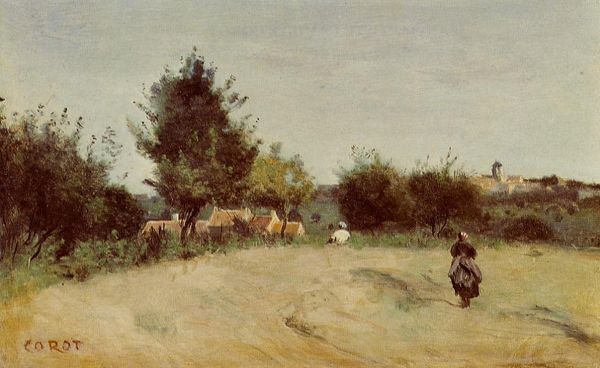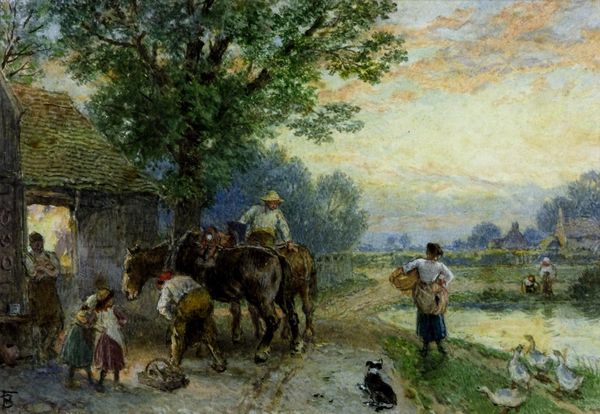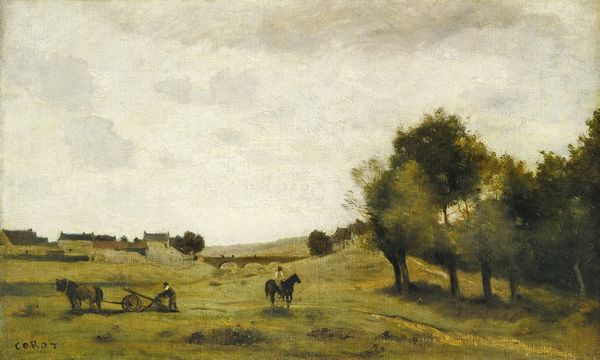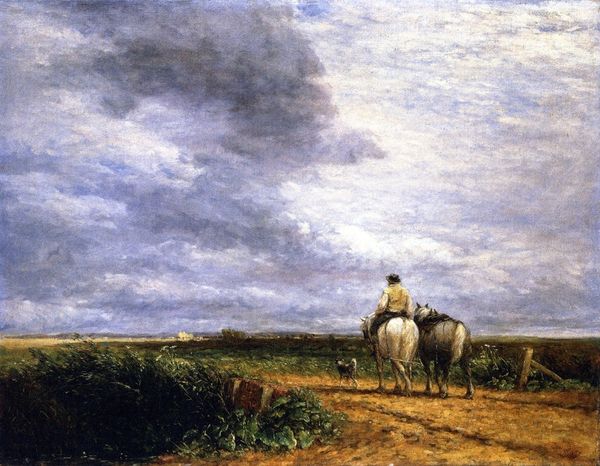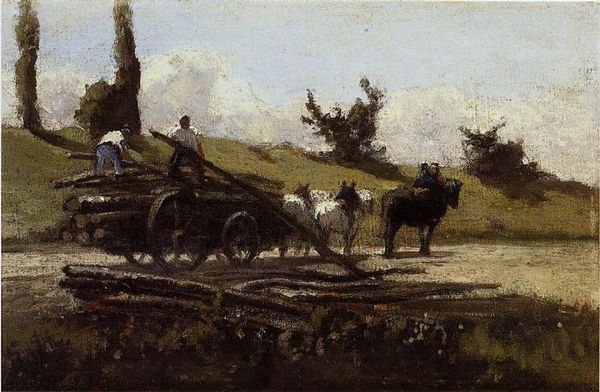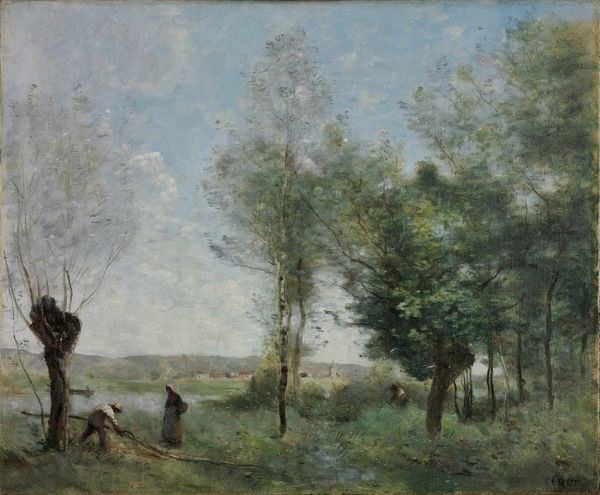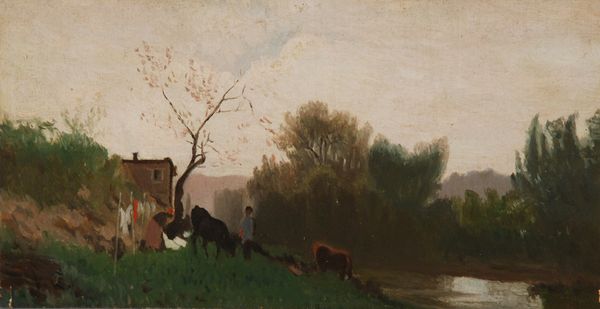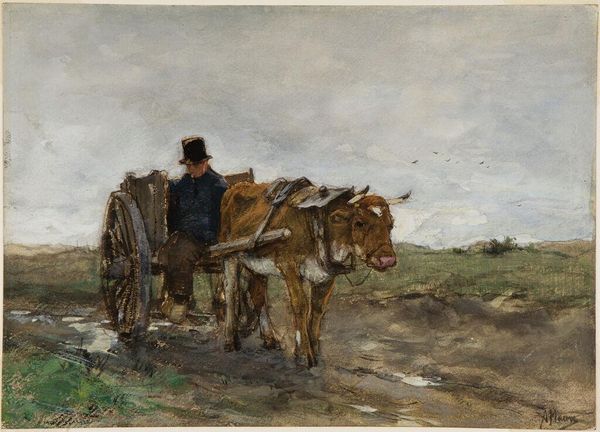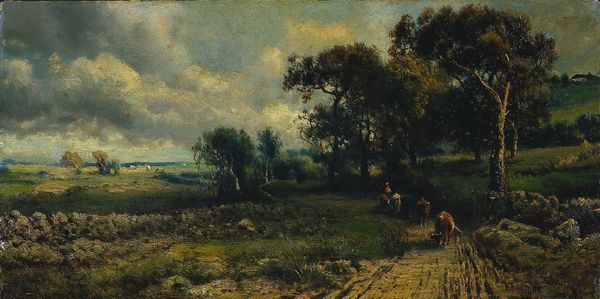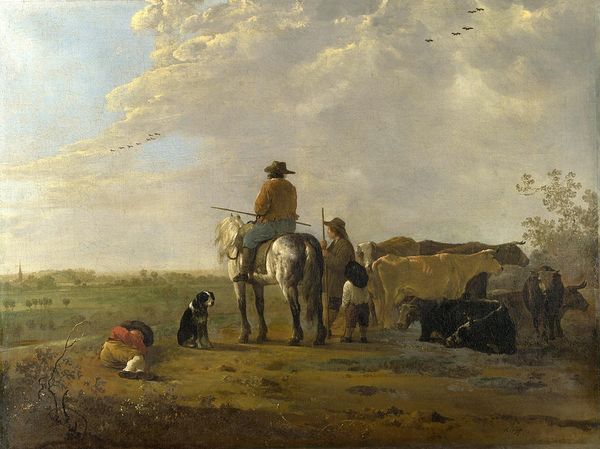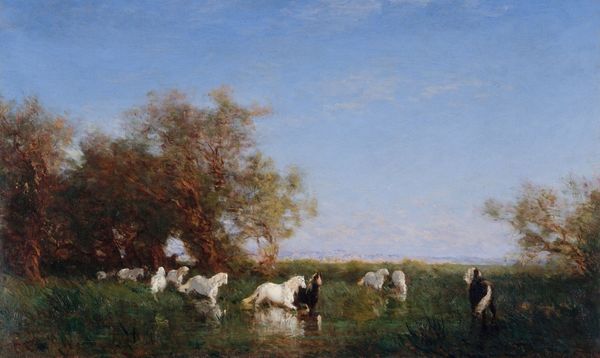
Dimensions: height 28.2 cm, width 37.8 cm, thickness 1.2 cm, depth 8.2 cm
Copyright: Rijks Museum: Open Domain
Editor: Karel Frederik Bombled's "Traveling Family on a Country Road," painted in 1881, shows a family and their animals journeying along a path. It feels like a fleeting, documentary snapshot. What can you tell us about the deeper meaning embedded in this painting? Curator: At first glance, yes, a family. But look again. Notice how their backs are turned, receding into the hazy distance. The symbols here tell a story of transience. The road itself, a common Romantic trope, signifies the journey of life, but here, it seems worn, suggesting hardship. The animals, their weary postures...it all points to the burdens of existence, doesn't it? Editor: I see what you mean. The figures aren't individualized, are they? Almost archetypal. Curator: Precisely! They represent the broader human condition, specifically a nomadic existence perhaps rooted in necessity rather than choice. The muted colors reinforce this sense of subdued resignation, reflecting a societal undercurrent of those who are often unseen. Consider also, the prominent sky. What might that symbolize? Editor: Hmm, vastness, maybe? An uncertain future? Curator: Exactly! Bombled, while rooted in Realism, taps into deeper Romantic sensibilities here, prompting us to contemplate the precariousness of life and the yearning for something more, a sense of belonging perhaps absent from their transient existence. Editor: It's remarkable how the simple image of a family walking becomes this complex exploration of societal realities. I never would have picked up on that. Curator: That’s the beauty of symbolism, isn't it? It allows art to speak to us across time and culture, reminding us of shared human experiences. This artwork definitely reflects a moment in the cultural memory and how the experience of a single family can resonate much deeper.
Comments
No comments
Be the first to comment and join the conversation on the ultimate creative platform.
